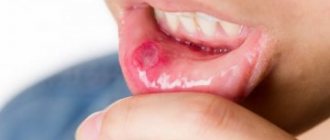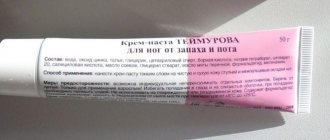Sodium fluoride
| Names | |
| Pronunciation | / ˌ s oʊ d I ə m e l ʊər aɪ d / [1] |
| IUPAC name Sodium fluoride | |
| Other names Flocid | |
| Identifiers | |
| Number of CAS |
|
| CHEBY |
|
| CHAMBL |
|
| ChemSpider |
|
| ECHA InfoCard | 100.028.789 |
| EU number |
|
| KEGG |
|
| PubChem C.I.D. |
|
| RTECS number |
|
| UNII |
|
| UN number | 1690 |
| CompTox Dashboard (EPA) |
|
InCHI
| |
| Characteristics | |
| Chemical formula | NaF |
| Molar mass | 41.988173 g/mol |
| Appearance | White to greenish solid |
| Smell | without smell |
| Density | 2.558 g/cm3 |
| Melting temperature | 993 °C (1819 °F, 1266 K) |
| Boiling point | 1704 °C (3099 °F, 1977 K) |
| Solubility in water | 36.4 g/l (0°C); 40.4 g/l (20 °C); 50.5 g/l (100 °C) [2] |
| Solubility | slightly soluble in ammonia, slightly soluble in alcohol, acetone, SO 2, dimethylformamide |
| Gas pressure | 1 mmHg Art. At 1077 C ° [3] |
| Magnetic susceptibility (χ) | −16.4 10 −6 cm 3 / mol |
| Refractive index ( n D) | 1,3252 |
| Structure | |
| Crystal structure | Cubic |
| Lattice constant | A = 462 pm |
| Molecular form | Octahedral |
| Thermochemistry | |
| Heat capacity ( C ) | 46.82 J/mol K |
| Standard molar entropy ( S o 298) | 51.3 J/mol K |
| Std formation enthalpy (Δ F H ⦵ 298 ) | -573.6 kJ/mol |
| Gibbs free energy (Δ f G ˚) | -543.3 kJ/mol |
| Pharmacology | |
| ATC code | A01AA01 (WHO) A12CD01 (WHO), V09IX06 (WHO) (18 F) |
| Dangers | |
| MSDS | [4] |
| GHS Pictograms | |
| GHS signal word | Danger |
| GHS Hazard Statements | H301, H315, H319, H335 [4] |
| NFPA 704 (fire diamond) | 0 3 0 |
| Flash point | Incombustible |
| Lethal dose or concentration (LD, LC): | |
| LD 50 (average dose) | 52–200 mg/kg (orally rats, mice, rabbits) [6] |
| NIOSH (US Health Exposure Limits): | |
| PEL (Permissible) | TWA 2.5 mg/m3 [5] |
| REL (recommended) | TWA 2.5 mg/m3 [5] |
| IDLH (Imminent Hazard) | 250 mg/m3 (as F) [5] |
| Related compounds | |
| Other anions | Sodium chloride Sodium bromide Sodium iodide Sodium astatide |
| Other cations | Lithium fluoride Potassium fluoride Rubidium fluoride Cesium fluoride France fluoride |
| Related compounds | TASF reagent |
| Unless otherwise stated, data is for materials in their standard state (at 25 °C [77 °F], 100 kPa). | |
| N check (what is there?)YN | |
| Links to infoboxes | |
Sodium fluoride
(
NaF
) is an inorganic compound with the formula NaF. It is used in trace amounts in the fluoridation of drinking water, toothpaste, in metallurgy as a flux, and is also used in pesticides and rat poison. It is a colorless or white solid, readily soluble in water. It is a common source of fluoride in the production of pharmaceuticals and is used to prevent tooth decay.
In 2022, it was the 247th most commonly prescribed drug in the United States, with more than one million prescriptions. [7] [8]
Uses [edit]
Sodium fluoride is sold in tablets to prevent tooth decay.
Dental caries [edit]
See also: Fluoride therapy and water fluoridation
Fluoride salts are often added to municipal drinking water (as well as some foods in some countries) to promote dental health. Fluoride increases the strength of teeth by forming fluorapatite, a natural component of tooth enamel. [9] [10] [11] Although sodium fluoride is used for water fluoridation and is indeed the standard by which other water fluoridation compounds are measured, hexafluorosilicic acid (H 2 SiF 6 ) and its salt sodium hexafluorosilicate (Na 2 SiF 6 ) are more commonly used supplements in the USA [12].
Osteoporosis[edit]
Fluoride supplements have been studied extensively for the treatment of postmenopausal osteoporosis. This supplement does not seem to be effective; Although sodium fluoride increases bone density, it does not reduce the risk of fractures. [13] [14]
Medical imaging[edit]
In medical imaging, sodium fluoride labeled fluorine-18 (USP, sodium fluoride F18) is one of the oldest tracers used in positron emission tomography (PET), having been used since the 1960s. [15] Compared with traditional bone scintigraphy performed with gamma cameras or SPECT systems, PET provides greater sensitivity and spatial resolution. Fluorine-18 has a half-life of 110 minutes, which requires its immediate use after receipt; this logistical limitation has hindered its adoption in the face of more convenient radiopharmaceuticals labeled with technetium-99m. However, fluorine-18 is generally considered the best radiopharmaceutical for skeletal imaging. In particular, it has high and rapid absorption into bone tissue, accompanied by very rapid blood clearance, resulting in a high bone mass-to-background ratio in a short time. [16] Additionally, annihilation photons produced by the decay of 18 F have a high energy of 511 keV compared to the 140 keV photons of 99m Tc. [17]
Chemistry[edit]
Sodium fluoride has many specialty chemical uses in synthesis and mining metallurgy. It reacts with electrophilic chlorides including acyl chlorides, sulfur chlorides and phosphorus chloride. [18] Like other fluorides, sodium fluoride finds use in desilylation in organic synthesis. Sodium fluoride can be used to produce fluorocarbons via the Finkelstein reaction; The advantage of this process is that it is easy to perform on a small scale, but is rarely used on an industrial scale due to the availability of more efficient methods (e.g. electrofluorination, Fowler's process).
Other uses[edit]
Sodium fluoride is used as a cleaning agent (such as "wash sour"). [19]
More than a century ago, sodium fluoride was used as a stomach poison for plant-eating insects. [20] Inorganic fluorides such as fluorosilicates and complex magnesium ions sodium fluoride such as magnesium fluorophosphate. They inhibit enzymes such as enolase that require Mg 2+ as a prosthetic group. Thus, fluoride poisoning prevents the transfer of phosphates in oxidative metabolism. [21]
Sodium Fluoride. What are the health hazards?
- Interesting
- Seal
On store shelves we usually see fluoridated toothpastes or mouth rinses. However, many people have recently been trying to avoid such hygiene products. Consumers are questioning the health benefits of sodium fluoride due to some information being revealed about the additive. This is despite the assurances of a number of dentists about the importance of fluoride for tooth enamel. Why is this happening? Have you ever wondered why fluoridated toothpastes have warnings on the label such as: “Children under 6 years of age are advised to use a pea-sized amount of toothpaste under adult supervision,” “Do not swallow,” “If fluoride is ingested, seek medical attention.” help”, etc. The reason toothpastes carry warning labels is to protect their manufacturers from lawsuits related to fluoride poisoning. Fluoride-free toothpastes usually do not have such warning labels because they do not have ingredients that can cause serious harm to the body. Today, dental pastes, tap water, and even milk are fluoridated. Fluoride can be contained in phosphorus fertilizers, therefore, black and green tea (which are grown using phosphorus fertilizers) may contain fluoride. And one more fact that is important to pay attention to. In a number of countries there is a ban on fluoridation of drinking water: Austria, Belgium, China, Czech Republic, Denmark, Finland, France, Germany, Hungary, India, Israel, Japan, Luxembourg, the Netherlands, Northern Ireland, Norway, Scotland, Sweden, Switzerland. And this is not at all accidental. When these countries learned about the “benefits” of fluorine, they immediately took the necessary decision at the legislative level - they banned its use. Since you now have a greater understanding of the reason for the warnings on fluoridated toothpaste labels, let's understand the differences between natural and synthetic fluoride so you know which fluoride to avoid.
Security[edit]
See also: Fluoride poisoning
The lethal dose for a 70 kg (154 lb) person is estimated to be 5–10 g.[19]
Fluorides, especially aqueous solutions of sodium fluoride, are quickly and quite intensively absorbed by the human body. [22]
Fluorides interfere with electron transport and calcium metabolism. Calcium is necessary to maintain cardiac membrane potential and regulate coagulation. Large amounts of fluoride salts or hydrofluoric acid can lead to fatal arrhythmia due to profound hypocalcemia. Chronic overabsorption can cause bone hardening, ligament calcification, and dental deposits. Fluoride may cause irritation or corrosion to the eyes, skin, and nasal membranes. [23]
Sodium fluoride is classified as toxic both when inhaled (dust or aerosol) and when taken orally. [24] In high enough doses, it has been shown to affect the heart and circulatory system. In the case of occupational exposure, the Occupational Safety and Health Administration and the National Institute for Occupational Safety and Health have set exposure limits at 2.5 mg/m3 over an eight-hour time-weighted average. [25]
At higher doses used to treat osteoporosis, plain sodium fluoride can cause leg pain and incomplete stress fractures when doses are too high; it also irritates the stomach, sometimes so much that it causes ulcers. Slow-release and enteric-coated versions of sodium fluoride do not have any significant gastric side effects and have milder and less frequent bone complications. [26] At lower doses used for water fluoridation, the only obvious side effect is dental fluorosis, which can change the appearance of children's teeth as they develop; these are generally modest impacts and are unlikely to have any real impact on aesthetics or public health. [27] Chronic ingestion of 1 ppm fluoride in drinking water can cause stained teeth (fluorosis), and exposure to 1.7 ppm causes staining in 30–50% of patients. [22]
Zinc fluorides - today only in combination with other fluoride compounds
Zinc fluoride is also a salt, easily soluble in water. In principle, a good candidate for joining the ranks of toothpaste formulations. Indeed, the first toothpaste with fluoride was based on zinc fluoride, a well-known American brand. But highly reactive zinc ions tend to cause problems! Therefore, the creators are forced to resort to some secrets to stabilize it. This has caused most manufacturers to switch to the more stable sodium fluoride.
In recent years, zinc fluorides have been experiencing a renaissance! Since in combination with amino fluorides they form a stable and effective chain.
Production[edit]
NaF is produced by neutralizing hydrofluoric acid or hexafluorosilicic acid (H 2 SiF 6 ), as by-products of the reaction of fluorapatite (Ca 5 (PO 4 ) 3 F) from phosphate rock, during the production of superphosphate fertilizer. Neutralizing agents include sodium hydroxide and sodium carbonate. Sometimes alcohols are used to precipitate NaF:
HF + NaOH → NaF + H 2 O
From solutions containing HF, sodium fluoride precipitates as the bifluoride salt of sodium bifluoride (NaHF 2 ). Heating the latter releases HF and gives NaF.
HF + NaF ⇌ NaHF 2
A 1986 report estimated the world's annual NaF consumption at several million tons. [19]
Safety measures during storage and transportation
Whether sodium fluoride will cause harm or benefit depends on how well safety precautions are followed when working with a toxic substance. In production facilities where sodium fluoride is used, air composition is regularly analyzed to assess the MPC content. Employees who interact with toxic chemicals must wear personal protective equipment. The workplace is equipped with a forced ventilation system.
Transportation of sodium fluoride occurs by any means of transport. Warehousing and storage of toxic substances is possible only in dry, well-ventilated areas.
Links[edit]
- ↑
Wells, John C. (2008),
Longman Pronunciation Dictionary
(3rd ed.), Longman, pp. 313 and 755, ISBN 9781405881180. According to this source, the alternative pronunciation of the second word /e l ɔːr aɪ d/ and, in UK, as well as /ел¯uərаɪd/. - Haynes, William M., ed. (2011). CRC Handbook of Chemistry and Physics (92nd ed.). CRC Press. clause 5.194. ISBN 978-1439855119.
- Lewis, Hazardous Properties of RJ Sax Industrial Materials. 10th ed. Volumes 1–3 New York, NY: John Wiley & Sons Inc., 1999, pp. 3248
- ^ ab Sigma-Aldrich Co. , Sodium fluoride. Retrieved March 17, 2015.
- ^ abc NIOSH Pocket Guide to Chemical Hazards. "#0563" . National Institute of Occupational Safety and Health (NIOSH).
- Martel, B.; Cassidy, K. (2004), Chemical Risk Analysis: A Practical Guide
, Butterworth-Heinemann, p. 363, ISBN 978-1-903996-65-2 - "Top 300 2020". ClinCalc
. Retrieved April 11, 2022. - "Sodium Fluoride - Drug Use Statistics". ClinCalc
. Retrieved April 11, 2022. - ↑
Bourne, volume editor, Geoffrey H. (1986).
Dietary Research and Advice on Health and Disease
. Basel: Karger. item 153. ISBN. 978-3-8055-4341-5. - ↑
Jr, Cornelis Klein, Cornelius S. Hurlbut (1999).
A Manual of Mineralogy: (by James D. Dana)
(21st ed., Rev. Ed.). New York: J. Wiley. ISBN 978-0-471-31266-6. - Selwitz, Robert H; Ishmael, in my midst; Pitts, Nigel B. (January 2007). "Caries". Lancet
.
369
(9555):51–59. DOI: 10.1016/S0140-6736(07)60031-2. PMID 17208642. S2CID 204616785. - Division of Oral Health, National Center for Prevention Services, CDC (1993), Fluoridation Census 1992 (PDF), retrieved 2008-12-29. CS1 maint: multiple names: list of authors (link)
- Haguenauer, D; Welch, W; Shi, B; Tugwell, P; Wells, G. (2000). "Fluoride for the treatment of postmenopausal osteoporosis." Cochrane Database of Systematic Reviews
(4): CD002825. DOI: 10.1002/14651858.CD002825. PMID 11034769. - Westergaard, P; Jorgensen, N. R.; Schwarz, P; Mosekilde, L (March 2008). "Effect of Fluoride Treatment on Bone Mineral Density and Fracture Risk—A Meta-Analysis." Osteoporosis International
.
19
(3): 257–68. DOI: 10.1007/s00198-007-0437-6. PMID 17701094. S2CID 25890845. - Blau, Monte; Ganatra, Ramanik; Bender, Merrill A. (January 1972). "18F-fluoride for bone imaging." Seminars in Nuclear Medicine
.
2
(1): 31–37. DOI: 10.1016/S0001-2998 (72) 80005-9. PMID 5059349. - Ordonez, A.A.; DeMarco, Vice President; Klunk, M. H.; Pokkali, S.; Jain, S.K. (October 2015). "Imaging chronic tuberculous lesions using sodium [18F] fluoride positron emission tomography in mice". Molecular Imaging and Biology
.
17
(5):609–614. DOI: 10.1007/s11307-015-0836-6. PMC 4561601. PMID 25750032. - Grant, F.O.; Fahey, F. H.; Packard, AB; Davis, R. T.; Alavi, A.; Treves, S. T. (December 12, 2007). "18F-Fluoride Skeletal PET: Applying New Technology to an Old Tracer". Journal of Nuclear Medicine
.
49
(1): 68–78. DOI: 10.2967/jnumed.106.037200. PMID 18077529. - Halpern, D.F. (2001), "Sodium fluoride", Encyclopedia of Reagents for Organic Synthesis
, John Wiley & Sons, DOI: 10.1002/047084289X.rs071, ISBN 978-0471936237 - ^ abc Aigueperse, Jean; Mollard, Paul; Devillier, Didier; Chemla, Marius; Faron, Robert; Romano, Rene; Couer, Jean-Pierre (2000). "Inorganic fluorine compounds." Ullman Encyclopedia of Industrial Chemistry
. Weinheim: Wiley-VCH. DOI: 10.1002/14356007.a11_307. - House, James E.; House, Kathleen A. (2015/09/10). Descriptive Inorganic Chemistry. Academic press. item 397. ISBN. 978-0-12-802979-4.
- Metcalfe, Robert L. (2007), "Insect Control", Ullman Encyclopedia of Industrial Chemistry (7th ed.), Wiley, p. 9
- ^ ab Kapp, Robert (2005), "Fluoride", Encyclopedia of Toxicology
,
2
(2nd ed.), Elsevier, pp. 343–346. - Greene Shepherd (2005), "Fluoride", Encyclopedia of Toxicology
,
2
(2nd ed.), Elsevier, pp. 342–343 - NaF Data Safety Data Sheet. hazar.com
- CDC - NIOSH Pocket Guide to Chemical Hazards
- Murray TM, Ste-Marie LG. Prevention and treatment of osteoporosis: consensus statements of the Scientific Advisory Board of the Canadian Osteoporosis Society. 7. Fluoride therapy for osteoporosis. CMAJ
. 1996. 155 (7): 949–54. PMID 8837545. - National Health and Medical Research Council (Australia). A systematic review of the effectiveness and safety of fluoridation
[PDF].
2007. ISBN 1-86496-415-4. Summary: Yeung CA. A systematic review of the effectiveness and safety of fluoridation. Proven dent
. 2008. 9 (2): 39–43. DOI: 10.1038/sj.ebd.6400578. PMID 18584000. - Wells, A.F. (1984), Structural Inorganic Chemistry
, Oxford: Clarendon Press, ISBN 978-0-19-855370-0 - "Chemical and Physical Information", Toxicological Profile of Fluorides, Hydrogen Fluoride, and Fluorine (PDF), Agency for Toxic Substances and Disease Registry (ATDSR), September 2003, page 187, accessed 11/01/2008
- Handbook of Minerals (PDF), mineral data publication, 2005.
Sodium monofluorophosphate is almost extinct!
It excludes all fluoride compounds. It does not contain fluorine ion, but a solid compound that does not dissolve as easily as ionic compounds. This compound was the result of creative work by chemists as a solution to the problem of combining calcium and fluorine.
What happens to this compound in the oral cavity remains unclear even to the scientists themselves who studied this topic. Some claimed that the element immediately binds to tooth enamel, others said that upon contact with enzymes in saliva, fluoride ion is released. But the secret remained not fully revealed!
Acid "attack"
Tooth enamel is hydroxyapatite with a low calcium content and a high carbonate content. In a stable state, in the immediate environment of the crystals of enamel prisms there is a sufficient amount of Ca2+-, PO43–-, OH–- and F– ions, so the crystals that make up the enamel are in chemical equilibrium with the surrounding liquid. The active concentrations (activity) of these ions determine the degree of saturation of the solution. When the solution is insufficiently saturated, hydroxyapatite crystals dissolve, and in a more favorable situation, when the solution is oversaturated, minerals enter the tooth enamel from the environment. During a cariogenic acid “attack” as a result of the vital activity of plaque bacteria (bacterial plaque), organic acids are formed from carbohydrates. When these acids dissociate, H+ ions are released.
As a result of an increase in the concentration of H+ ions (low pH), the content of hydroxide ions (OH–) in the bacterial plaque fluid surrounding the tooth decreases. In addition, H+ ions in the tissue fluid of the plaque convert phosphate ions (PO43–) into hydrogen phosphate ions (HPO42–), and, to a greater extent, into H2PO4– ions (Dawes, 2003). Consequently, at a lower pH of the environment, the concentration of PO43– ions decreases. To maintain the chemical balance of the solution surrounding the enamel surface, phosphate ions (PO43–) and then hydroxide ions (OH–) are released from the tooth tissue. As a result, to maintain the neutrality of the environment, calcium ions are removed from the hard tissues of the tooth, i.e., the dissolution of the hard tissues of the tooth occurs (Dawes, 2003).
The dynamics of the above process of tissue loss depends on the following factors:
- the chemical composition of the crystals that make up the enamel, dentin and cement of the tooth;
- composition of the bacterial plaque surrounding the tooth.
Based on the above, it is possible to explain the difference in critical pH values for enamel (5.5) or dentin (6.3), as well as the different degrees of caries activity in different patients. The degree of caries activity depends on the content of calcium, phosphate and fluoride ions in saliva or plaque fluid. These factors are also influenced by the frequency of sugar consumption and the quality of oral hygiene. They play an even more important role in the occurrence of caries.
When teeth that are free of plaque are chronically exposed to endogenous or exogenous acids, enamel erosion can occur. For the occurrence of erosion, not only the pH values of erosive drinks contacting the surface of the teeth are important, but also the content of calcium, phosphate and fluorine ions in them. For example, the “critical” pH value at which enamel erosion can occur may be lowered if calcium is added to a drink or food product.
The benefits and harms of fluoride in toothpaste
You need to understand that fluorine in this case is a generalized concept. For example, toothpaste does not contain fluoride itself in its primary state, but compounds based on it. Most often it contains the following types of fluorides:
- Sodium monofluorophosphate
is practically absent in modern pastes due to the slow release of fluoride ions. - Sodium fluoride
is a very popular component, which is characterized by fast action and good remineralizing properties. By the way, most opponents of fluoridation talk about the harm specifically from sodium fluoride. - Stann fluoride
is another fairly common ingredient used by several major toothpaste manufacturers. - Aminofluoride
is considered the most modern, effective and expensive type of fluoride in oral care products.
Conversations about the benefits and harms of fluoride in toothpaste have been going on for a long time. However, in reality, many theses are unverified or overly exaggerated. Below is a table showing the objective positive and negative qualities of fluoridated toothpaste.
- Fluoridated toothpaste prevents (partly!) demineralization of enamel and the development of caries. Oral bacteria produce lactic acid, which lowers pH levels and “leaches” calcium from tooth enamel, leaving it vulnerable. When exposed to fluoride, calcium crystals form a strong compound that is less susceptible to acid attack.
- Fluorides have antiseptic properties, preventing the growth of bacteria and the formation of plaque, and also positively affecting the composition and protective properties of saliva.
- Excess fluoride provokes fluorosis - a disease of the enamel with the appearance of characteristic spots and depressions. The risk of its occurrence is especially high in childhood during the development of baby teeth. However, fluoridated toothpaste alone can rarely become the main cause of excess fluoride in the body.
- Fluoride can negatively affect the saprophytic (friendly) microflora of the oral cavity. This is one of the modern theses from experts who talk about the harm of fluorides in toothpaste.
What to do in case of overdose
Overdose of fluoride compounds is rare. Symptoms are most often observed in children and are relatively nonspecific. There is increased salivation and lacrimation, diarrhea and nausea, visual disturbances and fever, and a drop in blood pressure. Symptoms may not always lead the doctor to the correct diagnosis, so you should always indicate the medications you are taking. In case of prolonged incorrect dosing of sodium fluoride, children develop fluorosis - a violation of the formation and calcification of enamel. The teeth become yellow and have a large number of brown spots, the enamel is mottled and becomes brittle.
In case of acute overdose, you should drink a large amount of liquid (more than 2 liters per day) with a calcium solution (calcium gluconate with water or regular milk is suitable). Calcium compounds contribute to the precipitation of fluorides and the leaching of acidic contents from the stomach. Laxatives (sodium sulfate) are prescribed and electrolytes (reosorbilact) are administered. An important condition of treatment is monitoring the level of calcium in the blood.
If a child has dental fluorosis, sodium fluoride should be discontinued and several tooth enamel whitening procedures should be performed. Over time, the stains will disappear, and the surface of the teeth will acquire a natural color and shine.
How does fluoride compound affect the body?
The instructions for use of the drug clearly describe the mechanism of action of sodium fluoride on the body. Fluorine ions are included in the process of bone formation and stabilize calcium, which is part of apatite. As you know, hydroxyapatite is the main component of bone tissue. Therefore, fluorine promotes the formation of sparingly soluble apatites, which provide bone stiffness and density. In addition, sodium fluoride enhances the activity of osteoblasts - cells that are responsible for the synthesis of bone mass. A similar effect is observed on enamel, which is the strongest tissue in the body. Sodium fluoride stimulates its maturation and increases strength, and also exhibits a slight bactericidal effect against cariogenic microflora.











